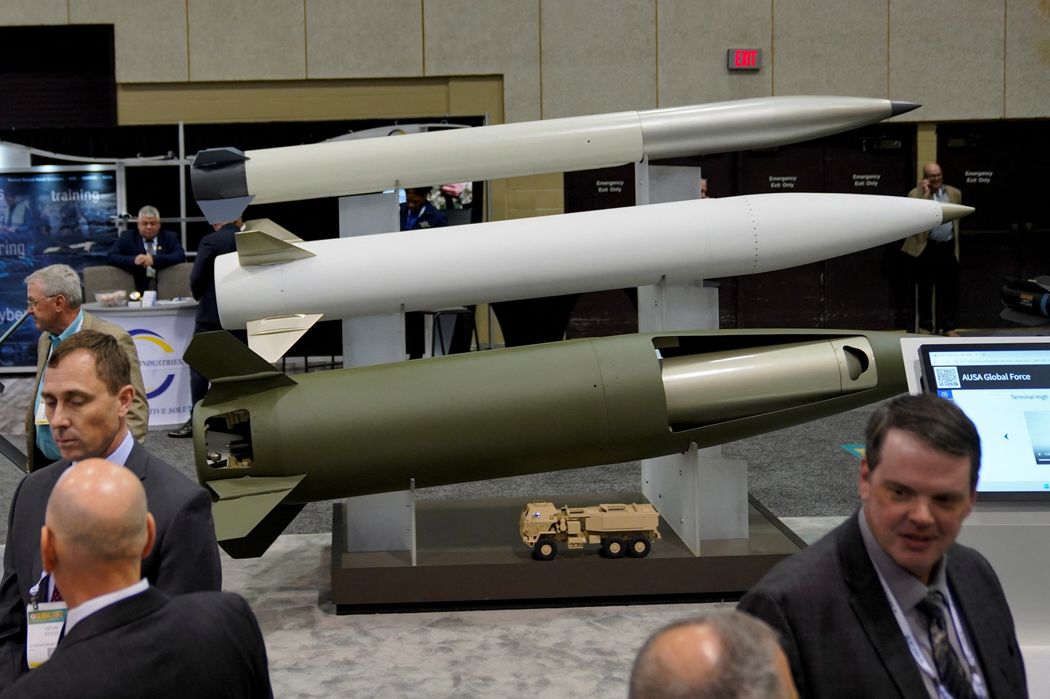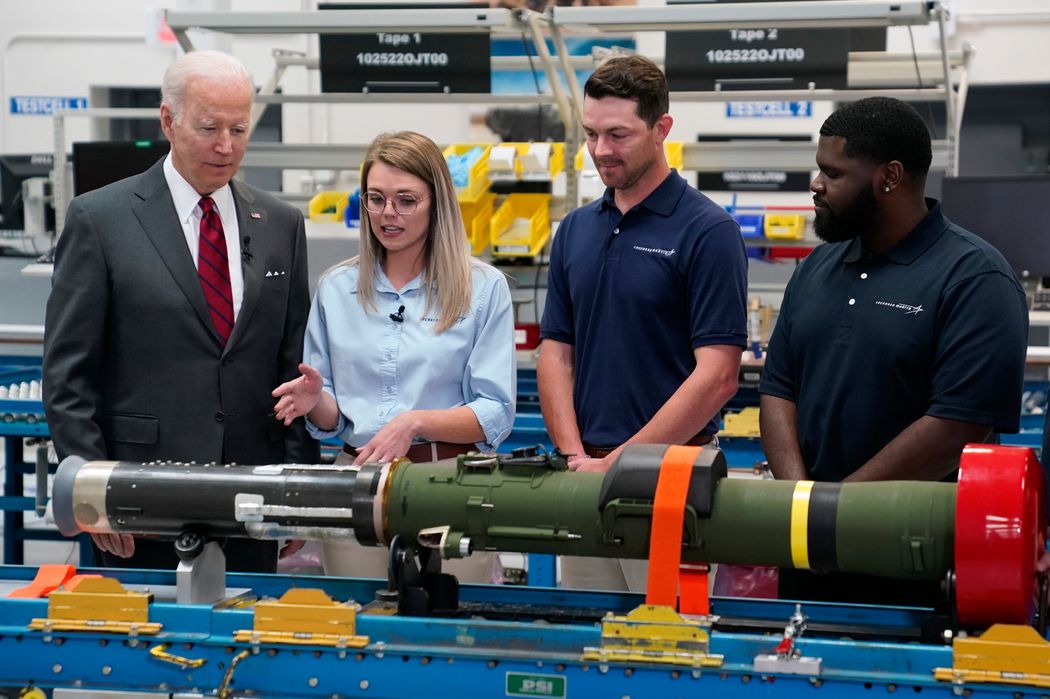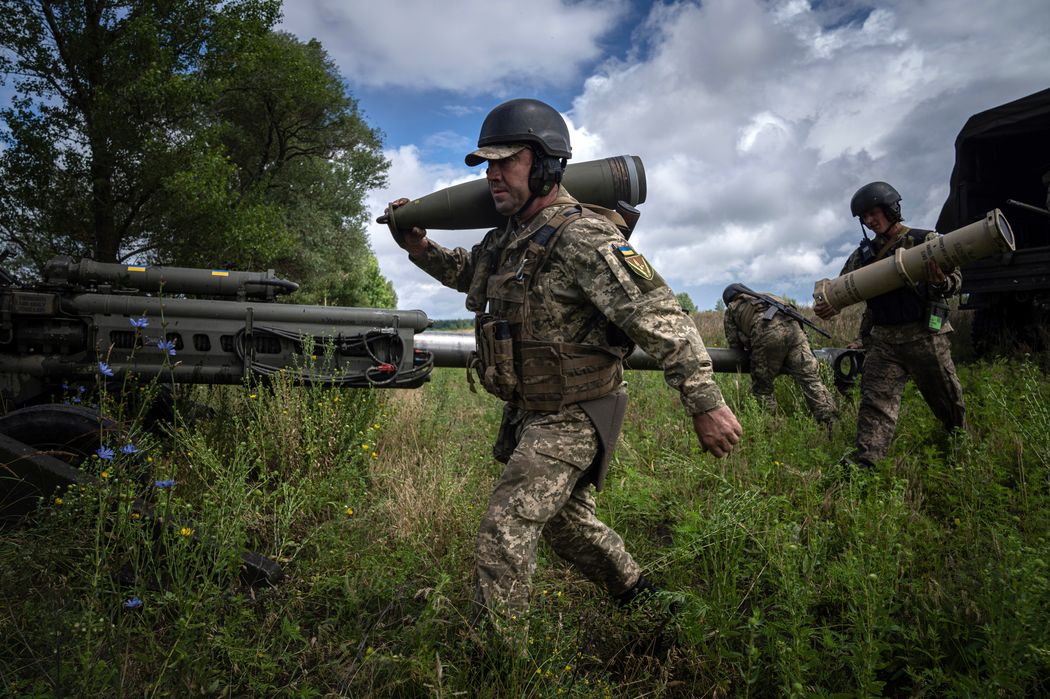Featured Galleries USUBC COLLECTION OF OVER 160 UKRAINE HISTORIC NEWS PHOTOGRAPHS 1918-1997
 Holodomor Posters
Holodomor Posters

Rocket Motor Shortage Curbs Weapons for Ukraine
 Lockheed Martin projects steady Ukraine-driven sales in 2023
Lockheed Martin projects steady Ukraine-driven sales in 2023
By Doug Cameron
Wall Street Journal
Tue, Apr 18, 2023, New York, NY

Lockheed Martin displayed missiles at a symposium in Huntsville, Ala., last month.
PHOTO: CHENEY ORR/REUTERS
Supply-chain snarls are still hindering efforts by weapons makers to produce more arms for Ukraine and refill stocks for the U.S. and its allies.
Lockheed Martin Corp. LMT 2.14%increase; green up pointing triangle said Tuesday that sales of its long-range missiles known as the Guided Multiple Launch Rocket System, or GMLRS, fell in the latest quarter from a year ago. The U.S. has shipped hundreds to Ukraine, where they have been widely used against invading Russian forces.
Big U.S. arms makers are taking longer than expected to boost production despite billions of dollars in support from the Pentagon. Defense companies plan to fulfill contracts by buying machinery from overseas to make more in-demand artillery shells.
Lockheed Martin is the first of the big defense companies to report earnings. Sales rose from a year earlier, though the company said it still expects revenue to shrink this year, and profit in the first quarter fell from a year ago. The company said shortages of key components such as rocket motors for GMLRS and other missiles continue to dog efforts to boost output.
When President Biden toured Lockheed Martin’s facility in Troy, Ala., last May, he and company Chief Executive Jim Taiclet committed to doubling production of Javelin missiles by 2024. That target has now been pushed out to 2026, according to the company and the Army, as have those to boost output of GMLRS and Himars rocket launchers.
“We thought we could get there earlier,” said Lockheed Martin Chief Financial Officer Jay Malave in an interview.

President Biden last year toured a Lockheed facility where Javelin antitank missiles are manufactured.
PHOTO: EVAN VUCCI/ASSOCIATED PRESS
Defense-company executives said rocket motors continue to be a problem for missile makers including Lockheed Martin and Raytheon Technologies Corp. Northrop Grumman Corp. has now been hired to produce more rocket motors and supplement one-time sole supplier Aerojet Rocketdyne Holdings Inc.
The Pentagon last week said it had awarded Aerojet a $216 million deal to modernize its production lines. The company said output was recovering after a fire at a facility last fall. Aerojet agreed in December to sell itself to L3Harris Technologies Inc. for $4.7 billion, though the deal is being scrutinized by antitrust authorities, who last year blocked a sale of Aerojet to Lockheed Martin.
Some defense executives have said that the Pentagon is being slow to award new deals and incentives to boost production, a charge rejected by Defense Department leaders.
Pentagon acquisition chief Bill LaPlante said last month it would be a five- or six-year effort to rebuild and expand munitions stocks to prepare for any potential conflict with China over Taiwan.
The Pentagon has awarded a handful of new contracts—worth around $1.2 billion—this year related to supplying Ukraine or backfilling stocks, according to a review of Defense Department announcements. Around $11 billion in contracts has been awarded since Russia’s invasion, though these are set to pay out over several years.

A Ukrainian serviceman carrying a 155mm artillery shell in the Kharkiv region before firing at Russian positions. PHOTO: EVGENIY MALOLETKA/ASSOCIATED PRESS
Most of this year’s awards are for 155mm artillery shells, with companies such as General Dynamics Corp., which reports quarterly results next week, contracted with boosting production. Other companies won deals to find overseas munitions stocks for the Pentagon to buy and send to Ukraine. The rest of the Pentagon awards are for military vehicles, including Humvees, drones, spare parts and training.
Investors piled into defense company stocks following Russia’s invasion of Ukraine last year. That interest cooled after the combination of supply-chain, funding and contractual issues pushed back the flow of deals into late 2023 and beyond.
Lockheed’s Mr. Malave said the company still expects to generate $1.5 billion in sales linked to Ukraine this year, in line with 2022’s level, and $6 billion by 2027. The company forecasts full-year revenue of up to $66 billion in 2023.
Lockheed Martin shares ended 2.4% higher at $501.41.
Defense companies benefited from a big bump in funding during the U.S. government’s fiscal 2023. The Pentagon budget request for $842 billion for fiscal 2024 is a 3.2% increase on what Congress enacted last year, below the top end of analysts’ expectations. With inflation in the sector running around at 5%, the proposal represents a cut in real terms.
The Pentagon’s aims for fiscal 2025 and beyond call for a further flattening of growth, highlighting the budget choices facing military chiefs and Congress.
Building resilience to deter China includes retiring older planes and ships to make way for modern platforms such as uncrewed aircraft and a big bump in the space budget, said the Pentagon’s Dr. LaPlante.
Congress has given the Pentagon the go ahead in principle to look at buying munitions such as shells and missiles in multiyear packages, much as it purchases big-ticket items such as ships and aircraft.
Lockheed Martin’s GMLRS and the PAC-3 missiles used in Patriot air defense systems are among those earmarked for block buys. The Pentagon aims to encourage industry to invest in extra production capacity, potentially with cost savings that the Government Accountability Office has said average 10% for boats and planes.
Congress has yet to be convinced, and no multiyear munitions deals have so far been approved and awarded.
Mike McCord, the Pentagon’s comptroller, said more homework is required on potential cost savings from multiyear buys, which he said he expects to be more of a feature of the fiscal 2025 budget request rather than this year’s.
LINK: https://www.wsj.com/articles/lockheed-martin-lmt-q1-earnings-report-2023-db3de58











